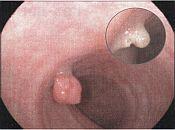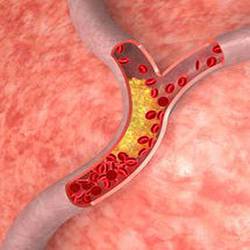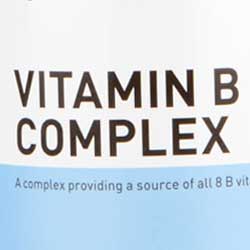Cancer Nutritional Causes, Treatment and Prevention
| Disorders
When faced with the diagnosis of cancer, mainstream treatment options such as chemotherapy, radiation, or surgery have not changed in several decades. Of those, chemotherapy, radiation, and anti-cancer drugs are unfortunately established carcinogens in themselves. In addition, immunosuppressive drugs inhibit the body's own ability to fight cancer cells, and they interfere with natural killer cells to destroy them.
However, until more advanced methods to combat cancer are developed and approved, current orthodox cancer treatments - while being far from perfect - do save some lives, and allow survivors to resume family ties and return to the workforce.
Tamoxifen has been the breast cancer treatment of choice, despite an only 0.6% reduction of invasive breast cancer compared to patients who did not take the drug. Only women on hormone replacement therapy benefited more from tamoxifen, however some have to deal with potentially fatal side effects.
Aromasin, Arimidex, or Femara,[1] had a higher response rate when used in post-menopausal women with hormone sensitive early breast cancer, but patients with liver or kidney disease have to be carefully monitored as there is a greater risk for bone loss and fractures, particularly in the spine.
Herceptin [2] is a drug used to treat HER2+ breast cancer, found in about 20-25% of cases. Unfortunately, it has a staggering list of potential side effects. Everolimus (Afinitor) is another, more recent HR+ breast cancer drug addition. Being an mTOR inhibitor, it counters the resistance of other drugs to hormonal therapy.
Chemotherapy has a long history for being used to treat cancer, although in addition to killing cancer cells, it can kill or damage healthy cells, and it increases the risk of infection, sores or bleeding, heart damage, hair loss, anemia, nausea, and vomiting. While Hodgkin's lymphoma and some forms of Leukemia respond well to chemotherapy, the DNA damage to non-cancerous cells surrounding solid tumors increases the production of the WNT16B protein, which stimulates more cancer growth.
For Non-Hodgkin's lymphoma that is resistant to chemotherapy, other options used include bone marrow / stem cell transplantation, radiation, and in some cases immunotherapy, where antibodies target cancer cells for destruction, or the cancer cells are killed through an attached toxin or radioactive isotope.
Oncologists are still divided whether or not to use antioxidants while receiving chemotherapy or radiation, since some studies show that they may be blocking the effectiveness of these treatments.[3] Other studies, however have indicated that those patients who did use antioxidants actually enjoyed fewer side effects and increased life spans.[4]
Radiation Therapy either consists of high-energy x-rays aimed at damaging cancer cells or stopping their growth, or through the use of brachytherapy, where radioactive seeds are implanted at the tumor site to deliver a high dose of radiation directly to the tumor. IMRT (intensity modulated radiation therapy) concentrates higher doses of 3-D radiotherapy toward the tumor while reducing the radiation effect to surrounding healthy tissues.
Side effects from radiation therapy generally involve the areas treated, including tissue damage or scarring, or there may be sterility as result of radiation to the abdomen and pelvis. Radiation therapy may increase the susceptibility to other cancers, and it is associated with an up to 80% failure rate.
Cryoablation / Cryosurgery is an alternate option to radiation for precancerous and cancerous conditions and involves a controlled treatment cycle of freezing / thawing / refreezing a tumor. It has been primarily used to treat cervical neoplasias, skin and prostate cancer, but is now offered for other types of cancer as well, provided the tumor has not spread to lymph nodes or other parts of the body (metastasis). There are usually fewer side effects compared to other cancer treatments such as chemotherapy, surgery, or radiation, and they are limited to localized tissue areas and may be temporary.
How successful are Alternative Cancer Treatments and Remedies?
There are plenty of exotic labels promoting "cancer cures" and there is no shortage of mystic healers who claim to have "successfully healed thousands of cancer patients..." They include Laetrile, Hoxsey therapy, Essiac, Livingston-Wheeler therapy, Max Gerson therapy, DiBella therapy, Govallo Embryo therapy, Zoetron therapy, Hydrogen Peroxide, Iscador, CanCell / Cantron, PC-SPES, MGN-3, MTH-68, Hydrazine Sulphate, 714-X, Sodium Bicarbonate, IAT (Immuno-Augmentative Therapy), Antineoplaston therapy, and others.
Non-mainstream-types of treatments or remedies for cancer are frequently considered by those who have been given little chance for survival through conventional cancer therapy, or they become the preferred choice of treatment already in the initial stages of cancer by people who simply distrust orthodox treatments (as a result of negative experiences), or they have previously at some point in their lives made a choice for alternative or holistic medicine instead.
There is no doubt that there have been "cures" of cancer over the years as a result of non-mainstream therapies, just like there have been cures through the use of orthodox medicine. There have also been documented remissions of cancer attributed to visualization (by willing the tumor to dissolve), or prayer, and some cancers have simply disappeared without any treatments or intervention whatsoever, but how many Repeatable Cures have resulted from any of the alternative therapies?
Only conventional medicine has any type of track record that hints of a cure rate with any particular therapy, and although the credibility of its "cancer cure" statistics may be suspect, holistic treatments don't have much of any statistical records at all. In its defense and to be realistic, alternative medicine just doesn't have the resources and research money to conduct as elaborate studies compared to what the orthodox medical establishment can afford. At the same time, there is no doubt that an inexpensive cancer treatment - if it existed - would not be very welcome by a profit-driven drug cartel.
When following celebrity cases in the news who had their cancers treated by either orthodox medicine, or had gone "South of the Border" for alternative or holistic treatments - and where they had no financial restrictions to seek out the finest treatments -- who enjoyed the best success rate? The answer is a disappointing Neither One!
It seems that in the majority of cases, cancer takes its course, and most therapies at best simply delay the inevitable, with only the less aggressive or non-genetically driven types of cancers successfully going into remission, in contrast to the big killers which are rarely contained past the five-year survival mark, no matter how "famous" the hospital or oncologist consulted.
Perhaps the psychological response to a cancer verdict can be a decisive factor in survival, where family or community support and a change in lifestyle, good genetic background, spiritual convictions, etc., may all contribute to any type of treatment chosen having a better chance of success. In other words, it may be the combined or synergistic approach that is superior not only when applied to nutrition, but also when faced with a killer disease and subsequent mortality - compared to each approach having a greater potential of failing to achieve remission when applied by itself.
For the same reason, when large amounts of single nutrients or remedies have been studied in the treatment of cancer (or other medical problems), and forms were used without co-factors, (e.g. Vitamin C without bioflavonoids, or Vitamin E and Carotenoids in a single, instead of complexed form), or when ratio conflicts were created with other interactive nutrients, results were frequently inconclusive or even detrimental.
If cancer patient X would have had orthodox therapy, and not seen a holistic practitioner, he would still be alive.
This is a common claim by the orthodox medical establishment - not just for cancer, but most other medical conditions as well -- that seeing a non-mainstream practitioner will delay "proper" treatments. While that point is certainly justified with many "fringe" alternative therapies, the same can be said of cancer patients not surviving because of conventional medicine, where the therapy killed the patient, and not the cancer.
After following patients for over three decades choosing anything from conventional drug therapy, nutritional therapy, herbal remedies, acupuncture, chiropractic treatments... all the way to doing nothing for various medical conditions, Dr. Ronald Roth had - like everyone else, seen botched cases making the news on both, the alternative and orthodox side of medicine. A patient certainly does have the responsibility to do the same research into the reputation and qualifications of complementary practitioners as should be done for conventional doctors, including getting a second or third opinion if necessary. In the end, those patients who had access to, and cooperation among both - the best conventional, and best nutritional practitioners - had the best survival rates!
Comparing tens of thousands of patient profiles since the mid-1970s, Dr. Ronald Roth had searched for common, nutritional denominators that would suggest risk factors in the development of various cancers, as well as other medical conditions. Following are some markers or interactions that have been identified either through intracellular measurements, or they may have already been documented elsewhere.
Nutritional Relationships or Risk Factors with Cancer
| Calcium: | high levels (breast, stomach, lung, prostate, pancreatic cancer) [inhibits Vitamin D] |
| low levels (colon, left ovarian, left testicular, prostate cancer) [high Zn/Ca ratio] | |
| Chlorine: | high levels (bladder, * colorectal, breast, esophageal cancer) |
| Chromium: | low levels (right ovarian, right testicular, * thymus gland cancer) |
| Copper: | high levels (most cancers) - due to copper being an important co-factor for angiogenesis (new blood vessel formation in tumors) |
| low levels (colon cancer), [but has to be kept low with metastasis to other organs]. | |
| Fluorine: | high levels (* bone, liver, colorectal cancer) |
| Germanium: | low levels (* lung, liver, gastric, colon, brain cancer, sarcomas, lymphomas, leukemia) |
| Iodine: | low levels (breast, uterine, ovarian, prostate [estrogen receptor-positive] cancers |
| Iron (ferritin): | high levels (liver, breast, colorectal cancer [i.e. heme iron]) |
| low levels (left breast, stomach, esophageal cancer) | |
| Magnesium: | high levels (breast, stomach, pancreatic cancer) |
| low levels (right ovarian, right testicular, * thymus gland cancer) | |
| Manganese: | high levels (liver, breast, prostate cancer) [estrogen receptor-positive cancers] |
| low levels (right breast, stomach cancer) [estrogen receptor-negative cancers] | |
| Molybdenum: | low levels (esophageal, stomach, * breast cancer) |
| Protein / Phosphorus: | high levels (prostate, uterine cancer) |
| low levels (bone, kidney, pancreatic, lymph cancer) | |
| Potassium: | high levels (right ovarian, right testicular, bladder cancer [less common]) |
| low levels (breast, colon * bladder cancer [more common]) | |
| Selenium: | low levels (lung, skin, prostate, liver, colorectal, breast cancer) |
| Sodium: | low levels (colon / rectal cancer, pancreatic cancer) |
| high levels (* stomach cancer, pancreatic cancer [with H. Pylori involvement]) | |
| Vanadium: | low levels (* breast cancer) |
| Zinc: | high levels (left ovarian, left testicular, colon, prostate cancer [less common]) |
| low levels (esophageal, breast, cervical, prostate cancer [more common]) | |
| Vitamin A: | low levels (lung, breast, bladder, leukemia - most cancers) |
| Vitamin B6: | low levels (breast, colorectal cancer) |
| Vitamin B12: | low levels (* breast cancer) |
| high levels (prostate cancer), (acute myeloblastic leukemia [one case]) | |
| Biotin: | low levels (pancreatic cancer - [Biotin is not indicated with H. Pylori involvement]) |
| Vitamin C: | low levels (esophageal, stomach, lung, cervical, colorectal, * prostate cancer [pancreatic cancer with H. Pylori involvement]) |
| Vitamin D: | low levels (colon, prostate, breast, lung, pancreatic, gastric, skin, ovarian, lymph cancer) |
| high levels (* lung, pancreatic cancer) | |
| Vitamin E: | low levels (liver, lung, breast, prostate, colorectal - most cancers) |
| Folate / Folic acid: | low levels (colon, breast, lung, pancreatic cancer) |
| high levels (* breast, prostate cancer), (lung, colon cancer [with high Vit B12]) | |
| Carotenoids: | low levels (prostate, breast, lung, ovarian, uterine cancer) |
| Beta Carotene: | high intake of synthetic form (lung cancer, i.e. with smokers) |
| Co-Enzyme Q10: | low levels (* breast, cervical, pancreatic, prostate cancer) |
| Melatonin: | low levels (* breast, prostate cancer) |
| Pancreatic / Digestive Enzymes: | low levels [i.e. trypsin / chymotrypsin] (pancreatic cancer, and most cancers) |
| Alcohol: | high intake (liver, colorectal, oral, esophageal, breast, pancreatic, prostate * stomach cancer) |
| Dairy products: | high intake (prostate, ovarian, breast cancer) |
| Heterocyclic amines (HCAs): | (* colorectal, bladder, stomach, prostate, breast cancer) |
| L-Tryptophan: | high intake (bladder cancer) |
| Mycotoxins (mold): | (liver cancer, estrogen receptor-positive cancers) |
Cancer Preventive / Therapeutic Treatment Remedies: |
|
| IP6 - Inositol Hexaphosphate: | (rhabdomyosarcoma, * prostate, breast, colon, liver cancer, leukemia) |
| Herbs / Misc:, | Shiitake / reishi mushroom, cat's claw, pau d'arco, echinacea, yellow dock, myrrh, mistletoe, celandine, red clover, plantain, Chinese mint (scutellaria barbata), thuja, milk thistle, graviola, wormwood (artemisia annua), chaparral, * shark cartilage. |
| General: | Calorie restriction, raising blood pH (cesium / alkaline therapy), raising or lowering cellular pH (P/Na ratio). |
| Allium-containing sources - garlic, onions, leeks, chives, green tea, ginger, licorice, turmeric / curcumin, fiber, chlorophyll, antioxidants, flavonoids, resveratrol, ellagic acid, omega 3 essential fatty acids (EFAs), cruciferous vegetables - cabbage, kale, cauliflower, broccoli (Sulforaphane),[5],[6] | |
| Sulforaphane supplements should be derived from myrosinase-active broccoli sprouts. If a sulforaphane glucosinolate source (without the myrosinase enzyme) is used, one has to chew and ingest some raw broccoli or radishes with the supplement to provide the myrosinase enzyme necessary to convert the precursor to sulforaphane. | |
| Note: A very high intake of cruciferous vegetables may require the addition of Iodine to prevent the development of hypothyroidism. | |
| (*) = preliminary research data, or animal data / unconfirmed for humans | |
The Stomach Acid Connection
Of all the nutritional risk indicators documented above and elsewhere, low stomach acid production is a consistent and reliable risk marker in the development of major types of malignancies, which includes cancer of the stomach, esophagus, breasts, brain, lymph, lungs, ovaries, testis, pancreas, and others. An infection with the Helicobacter Pylori bacteria also lowers stomach acid, and it is a known risk factor in the development of stomach cancer and pancreatic cancer.

Sigmoid colon polyp before & after polypectomy (insert)
Colorectal / Bowel cancer is an exception to the above in that there are no consistent nutritional markers that serve as common denominators for preventive purposes, although it is more likely to develop in the presence of insufficient cellular copper, calcium, and potassium levels. So in contrast to other types of cancer, colon cancer in its various forms is more elusive to early detection from a bio-chemical perspective, and one has to rely more on conventional screening such as fecal occult blood test, or colonoscopy for early detection and treatment (e.g. removal of polyps).
In addition, there are the somewhat controversial dietary propositions for Colon Cancer Prevention, which advocate a wholesome lifestyle with an emphasis on high-fiber foods, vegetables, fruits, whole grains, and a reduced intake of processed or red meats. However, while helpful for diverticulitis or constipation, these recommendations tend to aggravate Crohn's disease and/or Ulcerative colitis, which are known risk factors to develop intestinal cancers.
Whether genetics, or dietary lifestyles carry the blame for developing colon cancer, many intestinal - and particularly bowel disorders - involve abnormal gut bacteria. There is either a lack of beneficial bacteria, an overgrowth of harmful bacteria, or a fungal / yeast infection. Antibiotic therapy (i.e. Rifaximin) may be used when dealing with bacteria-initiated Irritable Bowel Syndrome without constipation. On the other hand, when probiotics (beneficial bacteria in yoghurt, capsules or tablets) fail to normalize an individual's gut flora, Fecal Transplants (sometimes from a spouse) may provide a lasting cure.
Esophageal Cancer can develop as a result of acid reflux, where acid causes a corrosive action on the esophagus, which lacks the protective mucous coating of the stomach. This is independent of the amount of acid the stomach produces. Since H. Pylori tends to lower stomach acid levels, it actually reduces the risk of developing esophageal squamous-cell carcinoma and esophageal adenocarcinoma (esophageal cancer), that may have otherwise resulted from chronic esophageal reflux, or Barrett's syndrome. But as mentioned above, H. Pylori increases the risk of developing pancreatic and gastric cancers.
As patients become cancer statistics, they contribute to the ever increasing data pool confirming a low-acid- cancer risk association, including the predictable sidedness of a condition. For instance, left-sided breast cancer corresponds to upper stomach acid levels being low, and right-sided breast cancer corresponds to lower stomach acid levels being low.
When following a large number of patients with low stomach acid, an unusually high rate of cancer emerges, and when looking at stomach acid levels of diagnosed cancer patients, there is evidence of low stomach acid in almost every single case of specific (above-mentioned) types of cancer. In addition, the sidedness of these cancers corresponding to acid levels of the lower or upper portion of the stomach clearly heightens the odds of the association.
Most patients when visiting the average GP for "heartburn" end up with a prescription for acid-lowering drugs, even though in most cases, their acid levels are below-normal. This may be due to a H. Pylori infection, low Vitamin D levels, or a variety of other nutritional factors, such as high calcium or magnesium, corresponding to the respective part of the stomach. (see also "Calcium & Magnesium").
When checking medical records, excessive manganese or iron levels may have also shown up as factors for cancer development subsequent to the use of drugs that affected liver chemistry, such as Tylenol, estrogen therapy, proton pump inhibitors (Nexium, Prilosec, Prevacid), antifungal or cholesterol-lowering (statin) drugs, alcohol, viral infections (hepatitis), and many other factors. (see "Iron & Manganese" for a complete list).
All these can result in higher manganese or excessive iron storage, regardless of actual manganese or iron consumption, although by the time cancer develops (usually many years later), patients don't necessarily exhibit excessive liver storage of these elements any longer, or iron or manganese levels have dropped to below normal - frequently corresponding to perimenopausal or postmenopausal age ranges, along with reduced stomach acid levels. High manganese levels coincide with estrogen receptor-positive, and low manganese levels coincide with estrogen receptor-negative cancers.
From many years of following patients with a similar medical history, it appears that if stomach acid levels are normalized in time (along with liver functions), patients remain largely cancer-free. This is also helpful after cancer has developed, where following successful therapy, cancer is more likely to stay in remission.
Whether triggered by H. Pylori infections (see "H. Pylori and low Stomach Acid" for details), or adverse drug, nutritional, or lifestyle factors -- low stomach acid is frequently followed by inadequate pancreatic enzyme production (i.e. trypsin or chymotrypsin), which is believed to be another potential risk factor with cancer.
While there are certainly many elements involved and responsible in the development of cancer - other than those corresponding to stomach acid levels - there is also an unquestionable association to acid production that has a valid basis in the prevention of many common types of cancer.

 Manganese may help with some symptoms of Parkinson's disease such as muscle rigidity and twitching...
Manganese may help with some symptoms of Parkinson's disease such as muscle rigidity and twitching...
 Research shows that phytosterols such as beta-sitosterol may help normalize the function of natural killer cells and T-helper lymphocytes...
Research shows that phytosterols such as beta-sitosterol may help normalize the function of natural killer cells and T-helper lymphocytes...
 Iron deficiency may be suspect with some forms of ADHD. 84% of children with ADHD were found to have abnormally low levels of ferritin...
Iron deficiency may be suspect with some forms of ADHD. 84% of children with ADHD were found to have abnormally low levels of ferritin...
 A high intake of B Vitamins can trigger heart palpitations, HBP, major complications in patients with congestive heart disease...
A high intake of B Vitamins can trigger heart palpitations, HBP, major complications in patients with congestive heart disease...